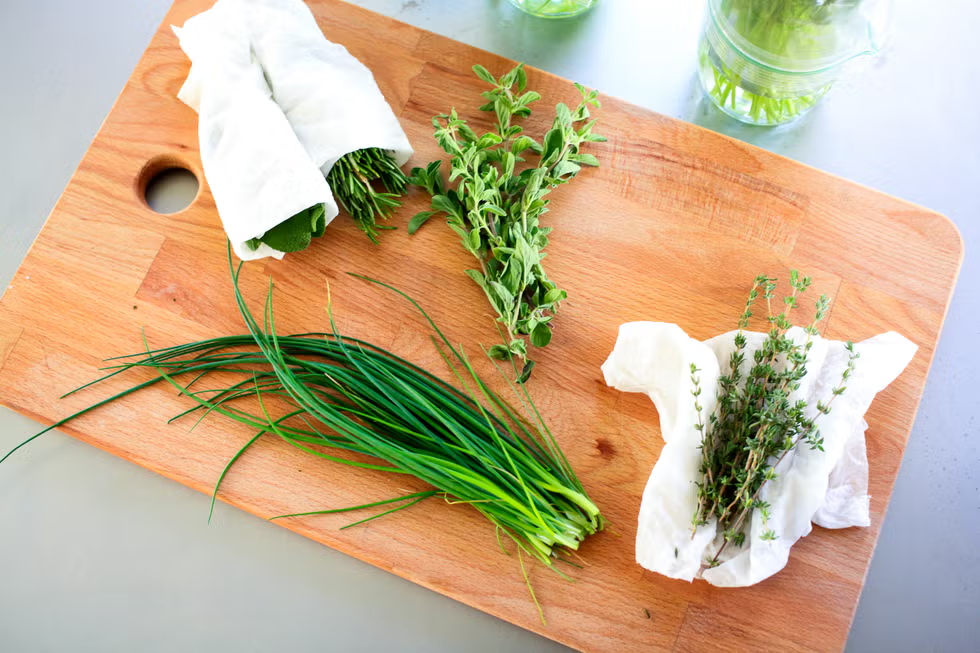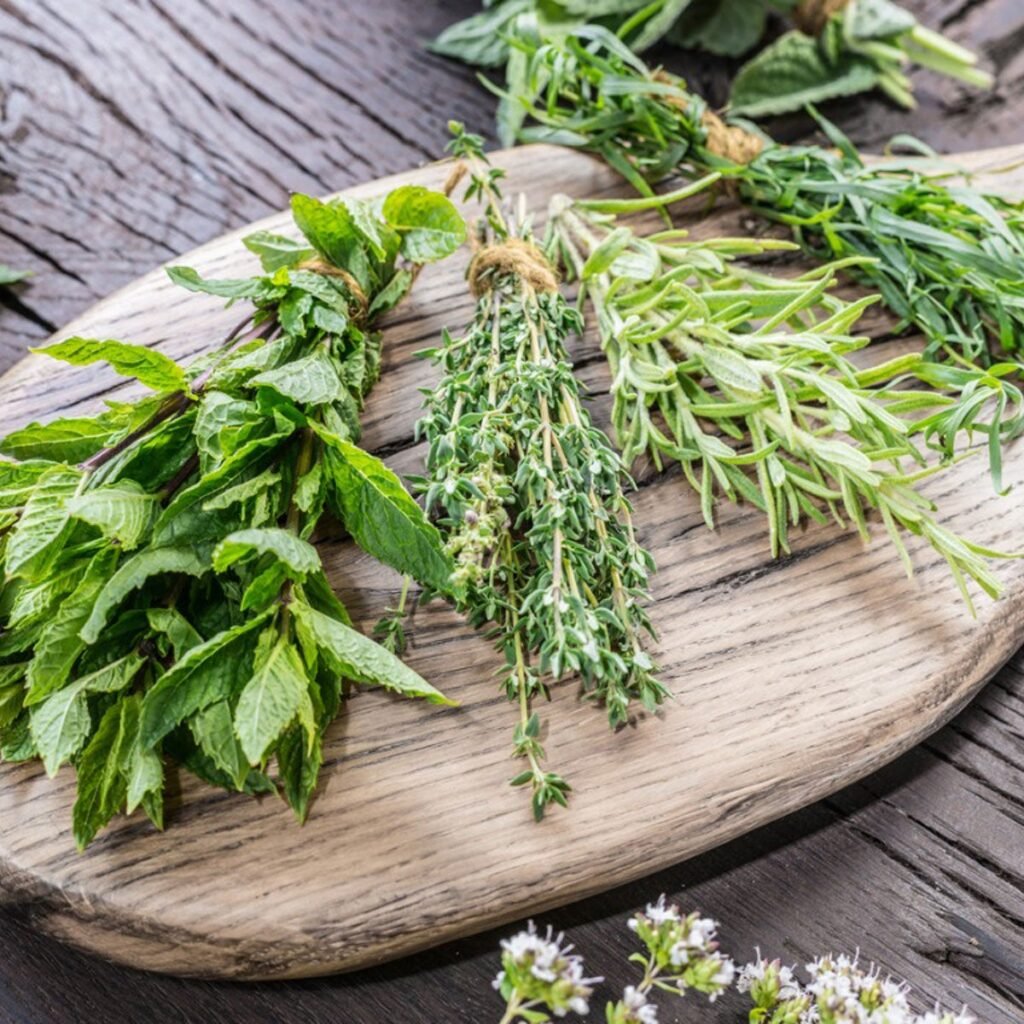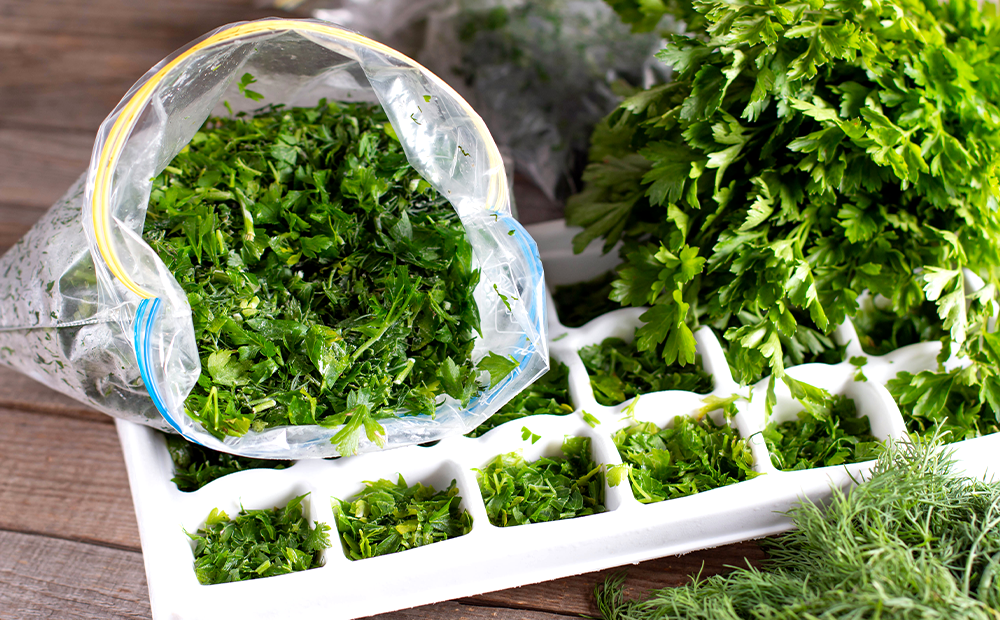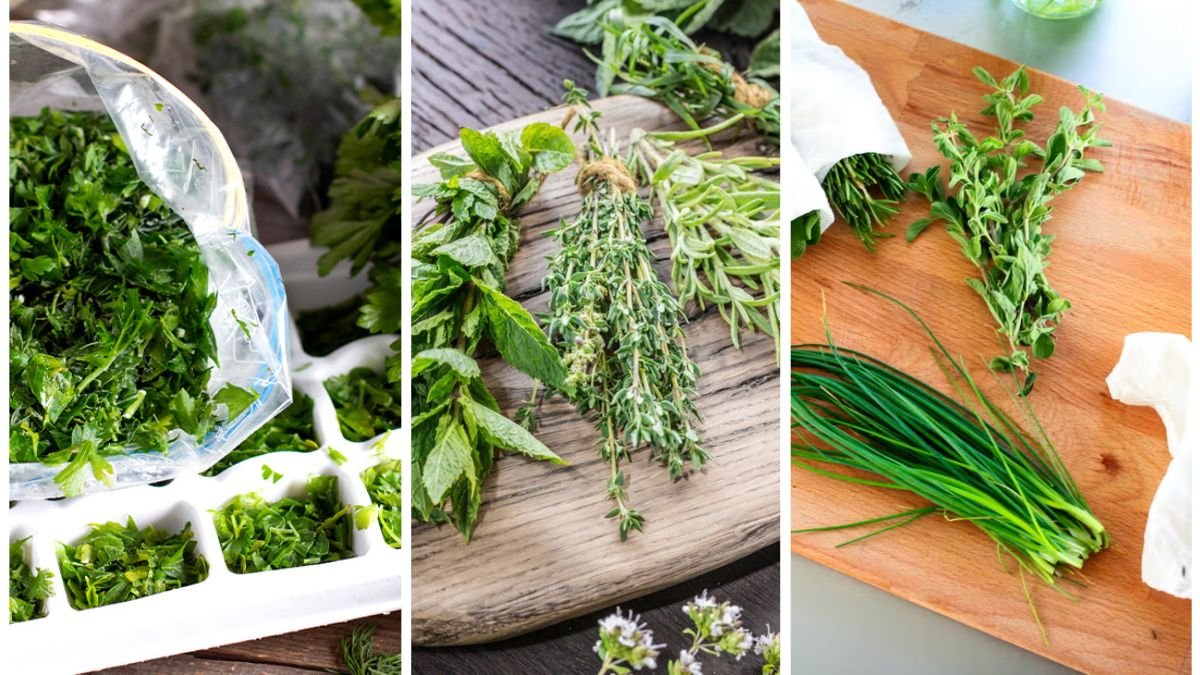As the gardening season winds down and the first frosts threaten your outdoor plants, you may find yourself with an abundance of fresh herbs. Basil, parsley, thyme, oregano, rosemary, mint, chives — all at their flavorful peak. The question becomes: How can you preserve that vibrant freshness to last through the cold, herb-less months of winter?
This article will walk you through multiple methods of storing herbs, from short-term refrigeration techniques to long-term preservation strategies like freezing, drying, and infusing. Whether you’re a home cook, gardener, or culinary student, this guide will teach you how to store herbs to keep them fresh all winter, while maintaining flavor, color, and nutritional value.
Why Store Herbs for Winter?

Fresh herbs don’t just add flavor to food — they add life. They brighten soups, sauces, roasts, teas, and even desserts. But most herbs are highly perishable, especially soft-stemmed varieties like basil or cilantro. If left in the garden during frost or stored improperly, they wilt, brown, or lose flavor rapidly.
Storing herbs properly allows you to:
- Extend the harvest beyond the growing season
- Save money by not purchasing herbs in winter
- Enjoy summer flavors in winter meals
- Reduce food waste
- Preserve nutritional and medicinal properties
Categorizing Herbs: Soft vs. Hard

Before you choose a storage method, it’s important to know what type of herb you’re working with:
Soft Herbs (Tender-Stemmed):
- Basil
- Parsley
- Cilantro
- Mint
- Chives
- Dill
These herbs are more delicate, often best enjoyed fresh, and lose flavor quickly when dried.
Hard Herbs (Woody-Stemmed):
- Thyme
- Rosemary
- Oregano
- Sage
- Bay leaves
- Marjoram
These herbs are more resilient, retain flavor when dried, and are easier to preserve over long periods.
Method 1: Refrigeration (Short-Term Storage)

If you just need to keep your herbs fresh for a few days to a week, refrigeration is the way to go.
For Soft Herbs:
- Trim the stems, just like you would for fresh flowers.
- Place in a glass of water with 1–2 inches of water at the bottom.
- Cover loosely with a plastic bag (to trap humidity).
- Store in the fridge door (not the coldest part).
- Change the water every 2 days.
Best for: Parsley, cilantro, mint, basil (room temp only – see below)
Basil Exception: Basil turns black in the fridge. Keep it on the counter using the method above, away from direct sunlight.
For Hard Herbs:
- Wrap herbs in a slightly damp paper towel.
- Place in a zip-top plastic bag or airtight container.
- Store in the crisper drawer of your refrigerator.
Best for: Rosemary, thyme, oregano, sage
Shelf life: 7–14 days
Method 2: Air Drying (Traditional and Effective)

Drying is one of the oldest and most reliable ways to store herbs for winter, especially woody or hard herbs.
Best for:
- Rosemary
- Thyme
- Oregano
- Sage
- Bay leaves
How to Air Dry Herbs:
- Harvest herbs just before flowering, when oils are most concentrated.
- Rinse gently and pat dry.
- Gather stems into small bundles and tie with string.
- Hang upside down in a dark, dry, well-ventilated area (like a pantry or closet).
- Allow 1–2 weeks to dry completely.
- Crumble leaves off stems and store in airtight glass jars away from heat and light.
Tip: Never dry in direct sunlight — it causes herbs to lose color and flavor.
Shelf Life: Up to 12 months (check for loss of aroma or color)
Method 3: Oven or Dehydrator Drying (Fast Track)
If you don’t have time or the right environment for air drying, use a low-temperature oven or dehydrator.
How to Dry in Oven:
- Set oven to lowest temperature (ideally under 170°F / 75°C).
- Spread herbs in a single layer on a baking sheet.
- Dry with the oven door slightly open to allow moisture to escape.
- Check every 30 minutes; herbs should be crispy, not burnt.
- Cool, crumble, and store in glass jars.
In a Dehydrator:
- Use mesh trays.
- Set temperature to 95–115°F (35–46°C).
- Dry time: 2–4 hours depending on herb type and humidity.
Method 4: Freezing (Preserves Freshness & Flavor)

Freezing is ideal for soft herbs, preserving more flavor and color than drying. However, they won’t retain crisp texture — best used in cooked dishes.
How to Freeze Herbs (3 Methods):
1. Ice Cube Trays (with Water or Oil)
- Chop herbs finely.
- Place in ice cube trays, filling each about ⅔ full.
- Cover with olive oil or water.
- Freeze, then transfer cubes to a freezer bag.
Perfect for: Basil, parsley, dill, cilantro, mint
Use in: Soups, sauces, stews, stir-fries
2. Flash Freezing Whole Leaves
- Wash and dry leaves completely.
- Spread on a tray (not touching) and freeze until solid.
- Transfer to airtight freezer bags, removing as much air as possible.
Best for: Sage, rosemary, thyme, tarragon
3. Herb Butter
- Mix chopped herbs into softened butter.
- Roll into a log, wrap in wax paper, and freeze.
- Slice off pieces as needed.
Great for: Garlic chive butter, rosemary-thyme butter for meats
Shelf Life (Freezing): 6–8 months
Method 5: Infused Oils, Vinegars, and Salts
Infusing herbs into oils or vinegars is a flavorful way to extend their use into winter for cooking or salads.
Herb-Infused Oil:
- Blanch herbs briefly (optional but safer).
- Dry thoroughly to avoid bacteria.
- Place herbs in sterilized bottle.
- Fill with olive or neutral oil.
- Store in refrigerator, use within 4 weeks.
Botulism Warning: Never store fresh herbs in oil at room temp. Always refrigerate and use quickly.
Herb-Infused Vinegar:
- Combine herbs with white wine or apple cider vinegar.
- Let sit for 2–4 weeks in a dark cabinet.
- Strain and rebottle.
Ideal for salad dressings, marinades, or gifts.
Herb Salt:
- Chop herbs and mix with coarse sea salt.
- Spread to dry, then store in jars.
Great for finishing dishes or seasoning meats.
Method 6: Herbal Tinctures and Teas
For medicinal herbs like lemon balm, mint, chamomile, or lavender, consider making:
Herbal Teas:
- Dry herbs as described above.
- Store in airtight containers.
- Use 1 tsp per cup of hot water.
Tinctures:
- Steep herbs in high-proof alcohol (vodka) for 4–6 weeks.
- Store in dropper bottles.
- Used for wellness, remedies, or stress relief.
Best Storage Practices for Long-Term Success
Regardless of preservation method, keep these rules in mind:
| Tip | Why It Matters |
|---|---|
| Store in airtight containers | Prevents moisture and oxidation |
| Keep away from light and heat | Preserves color and essential oils |
| Label with date and name | Avoids confusion and waste |
| Check regularly for mold or off smells | Safety first! |
| Use glass jars over plastic | No flavor leaching, longer shelf life |
Conclusion
Storing herbs for the winter is both an art and a science. With a little planning and the right method — whether that’s drying, freezing, or infusing — you can capture the essence of your summer garden and enjoy it all year long.
From freshly chopped parsley in a winter soup to a cube of basil-infused olive oil melting into pasta, your preserved herbs will elevate your cooking and nourish your body during the coldest months. Best of all, you’ll be living more sustainably, wasting less, and reconnecting with nature’s rhythm.
So before winter sets in, grab your shears and baskets, harvest those herbs, and follow these techniques to make the most of your garden’s bounty — long after the last leaf falls.
